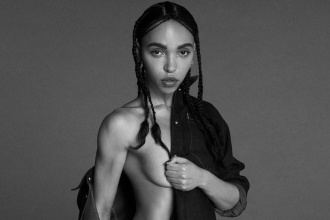Gen Z, finding themselves in fashion
Is #cottagecore your thing or do you consider yourself an #egirl? Or, are you just fascinated by how you fit into all of these labels? Youth culture has always been the driving force behind trends. So, let’s dive into the influences shaping Gen-Z fashion and how the resounding trend is to be whoever you want to be in any given moment.
We’ve moved beyond the domination of Hypebeast and logo culture and have entered a TikTok-fueled fashion universe, where Gen Z makes the rules. Their strict subcultures are used to describe a sense of style, lifestyle aesthetic, and are defining our current zeitgeist. The millennials’ successors take pleasure in poking fun at older generations by ironically embracing fashion from the nineties and noughties. Eventually, the joke becomes the next Gen Z fashion trend, creating a carbon copy of already-existing subcultures.
Internet Subcultures
Gen Z’s image-based identities are nothing new. Historically, style subcultures have been created in opposition to mainstream fashion and pop culture. For generations, youth, craving belonging and escapism, have used fashion to experiment with their idea of self. While the current trendsetters use hashtags and FYP, previous generations have modelled similar aesthetics to explore who they are (they just used MySpace, Tumblr and the mall to show off their style).

Take #cottagecore, for example: the TikTok aesthetic marked by flowy cuts, feminine patterns, and soothing color palettes evokes a lifestyle of outdoor living and a sense of anti-capitalist freedom. The trend was popularised by viral content creators like Noémie Sérieux, the founder of CottagecoreBlackFolks. While it’s representation now is more diverse, #cottagecore is a throwback to the late noughties and the free-spirited Boho feeling that swept the style charts with leaders like Alexa Chung, Lisa Bonet, Florence Welch and Lana Del Rey. Both of these trends encapsulate more than a flowery lifestyle, offering a feminine vision of the world “where men are not consciously excluded; they are simply an afterthought,” according to Isabel B. Slone in The New York Times. The fact that cis-het men are almost entirely absent here is perhaps why young queer women are taking the Gen Z adaptation by storm. On TikTok, #cottagecorelesbians has nearly 33 million views.
 When we flip the switch and put e-girls under the microscope, we see a contrasting image of experimental eyeliner, piercings, oversized logo tees and a love of gaming. For anyone who grew up in the 2000s, this is nothing more than being a ‘scene kid’. Aesthetically, both groups are somewhat similar, as are the origins. Whether it be TikTok and PS5 or MySpace and Gameboys, followers of both trends found themselves in the online world. The virtual world offers instant escape and a sense of community, and the element of protection from the outside world via a screen. The ideas remain the same, even if skinny jeans have been swapped for wide-legged denim.
When we flip the switch and put e-girls under the microscope, we see a contrasting image of experimental eyeliner, piercings, oversized logo tees and a love of gaming. For anyone who grew up in the 2000s, this is nothing more than being a ‘scene kid’. Aesthetically, both groups are somewhat similar, as are the origins. Whether it be TikTok and PS5 or MySpace and Gameboys, followers of both trends found themselves in the online world. The virtual world offers instant escape and a sense of community, and the element of protection from the outside world via a screen. The ideas remain the same, even if skinny jeans have been swapped for wide-legged denim.
Belonging Online
TikTok’s domination not only lets fashion classes thrive but has become a crucial place for Gen Z to find an inclusive group to best suit their dreams and realities. Finding and joining an online group is easier than ever with a low barrier to entry. FYPs curate tailored content to connect users with those posting about similar lifestyle aesthetics and topics. It may not have been as easy for millennials, but MySpace, Tumblr and MSN also served as a hub to find your online family and find comfort in your aesthetic.
Whatever the label, and whether it is quite as unique as Gen Z likes to believe, let’s ‘stan’ those finding themselves and take notice of the current generation that is embracing inclusivity in fashion and beyond.







